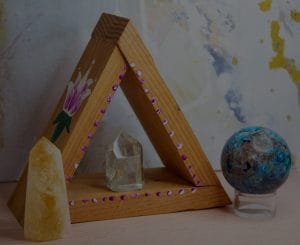**Abstract:** Discover how to transform your meditation space using Feng Shui energy tools, creating a serene environment that enhances mindfulness and promotes inner peace.
Creating Harmony: The Essence of Feng Shui
Feng Shui, an ancient Chinese practice, revolves around the idea of harmonizing individuals with their surrounding environment. This principle is particularly beneficial when designing a meditation space. By incorporating Feng Shui energy tools, you can create an atmosphere that fosters relaxation and mindfulness. These tools can range from crystals and plants to specific colors and arrangements that invite positive energy, or “Chi,” into your space.
The Role of Crystals in Meditation
Crystals are powerful allies in enhancing your meditation practice. Each crystal possesses unique properties that can influence your emotional and spiritual state. For instance, amethyst is known for its calming effects, making it ideal for reducing stress during meditation. Rose quartz, on the other hand, promotes self-love and compassion, helping you connect deeply with your inner self. Placing these crystals strategically in your meditation area can amplify their energy, creating a more conducive environment for spiritual growth.
Colors and Their Impact on Energy Flow
The colors you choose for your meditation space play a significant role in influencing your mood and energy levels. Soft blues and greens can evoke tranquility, while warm yellows and oranges can stimulate creativity and joy. When selecting colors, consider the emotional response you wish to cultivate during your meditation practice. Painting the walls or adding decorative elements in these hues can significantly enhance the energy flow and create a calming atmosphere.
The Power of Plants: Bringing Nature Indoors
Incorporating plants into your meditation space not only beautifies the environment but also contributes to a sense of peace and serenity. Plants like peace lilies and snake plants are known for their air-purifying qualities, which can help create a healthier space for meditation. Additionally, the presence of greenery can reduce stress and anxiety, allowing you to enter a more relaxed state of mind. Positioning these plants near your meditation area can invite a sense of balance and harmony.
Sound and Silence: Crafting an Acoustic Environment
The auditory experience in your meditation space is just as important as the visual. Consider incorporating soft, soothing sounds, such as gentle music or nature sounds, to enhance your meditation experience. Alternatively, silence can be a powerful tool, allowing you to connect deeply with your thoughts and feelings. Experiment with different soundscapes to discover what resonates with you, creating an auditory environment that supports your practice.
Personalization: Making Your Space Unique
Every individual has unique preferences and needs when it comes to their meditation practice. Personalizing your space with items that hold special meaning can enhance your connection to the environment. Whether it’s a favorite piece of art, a meaningful quote, or a cherished object, these personal touches can serve as powerful reminders of your intentions and goals. By surrounding yourself with items that inspire you, you create a meditation space that feels truly yours.
Conclusion: Embrace the Transformation
Elevating your meditation space with Feng Shui energy tools is a journey towards creating a sanctuary for your mind and spirit. By understanding the principles of Feng Shui and incorporating elements like crystals, colors, plants, and personalized touches, you can cultivate an environment that enhances your meditation practice. Embrace this transformation and allow your space to support your journey towards mindfulness and inner peace.










